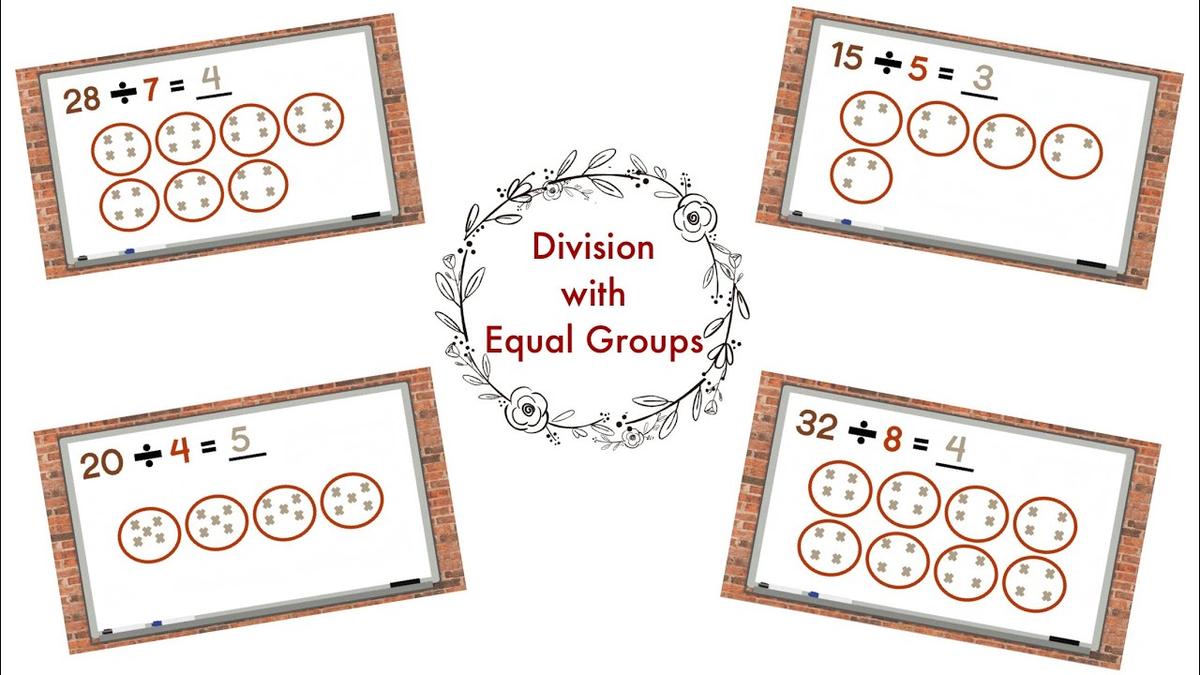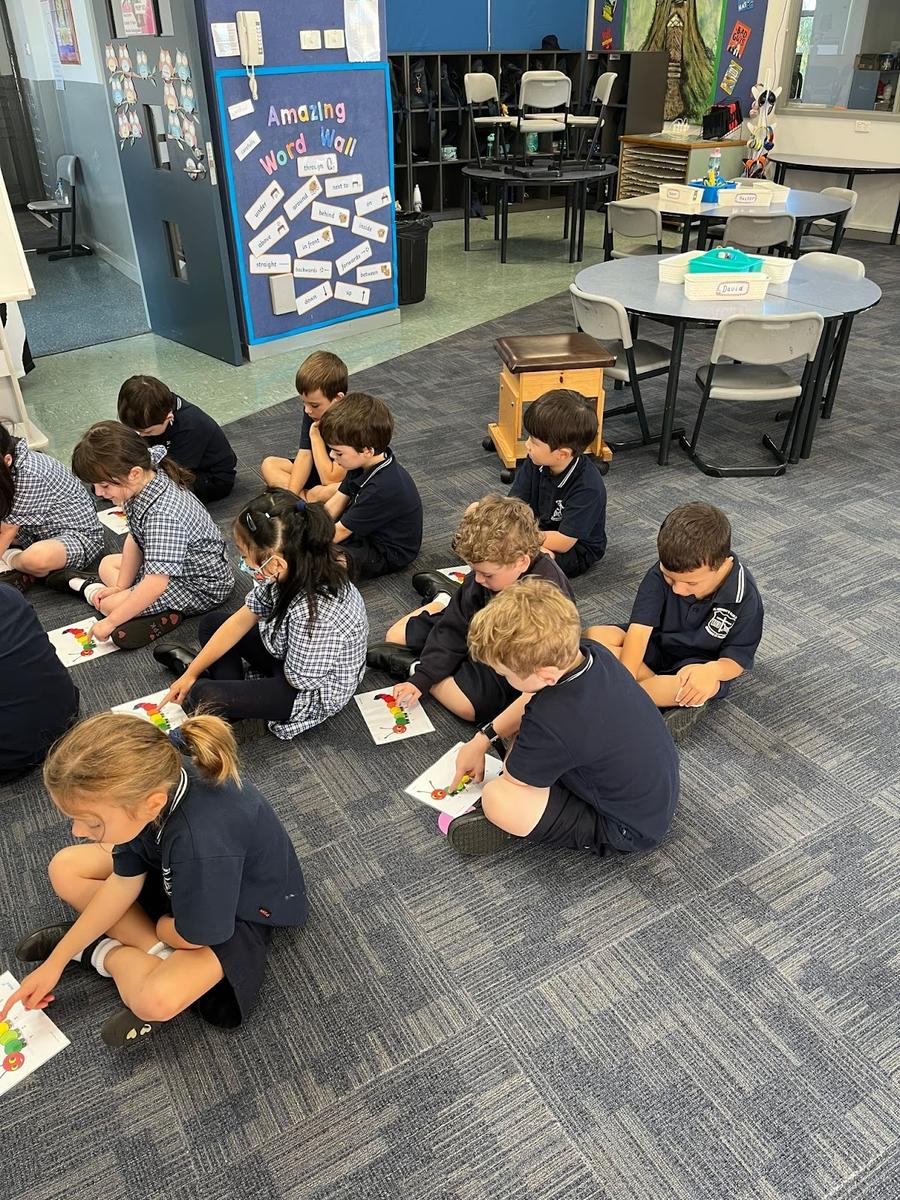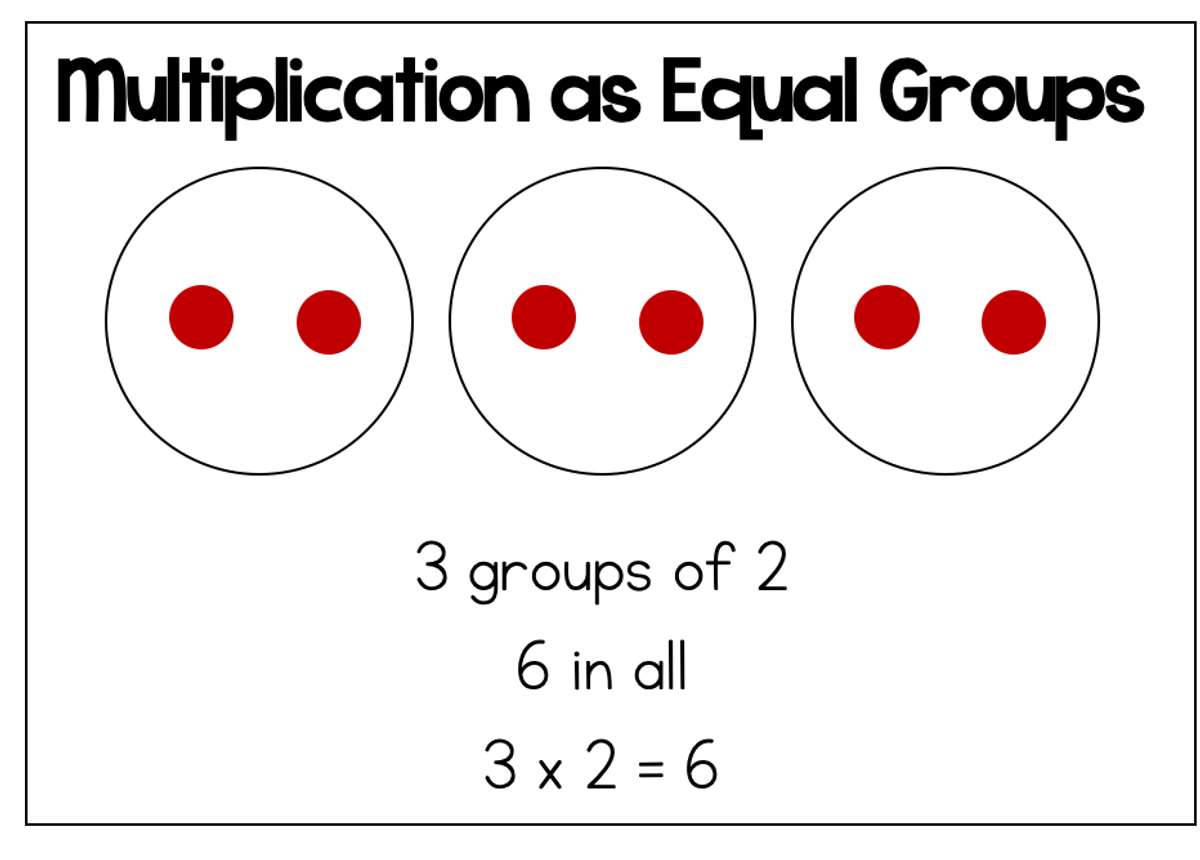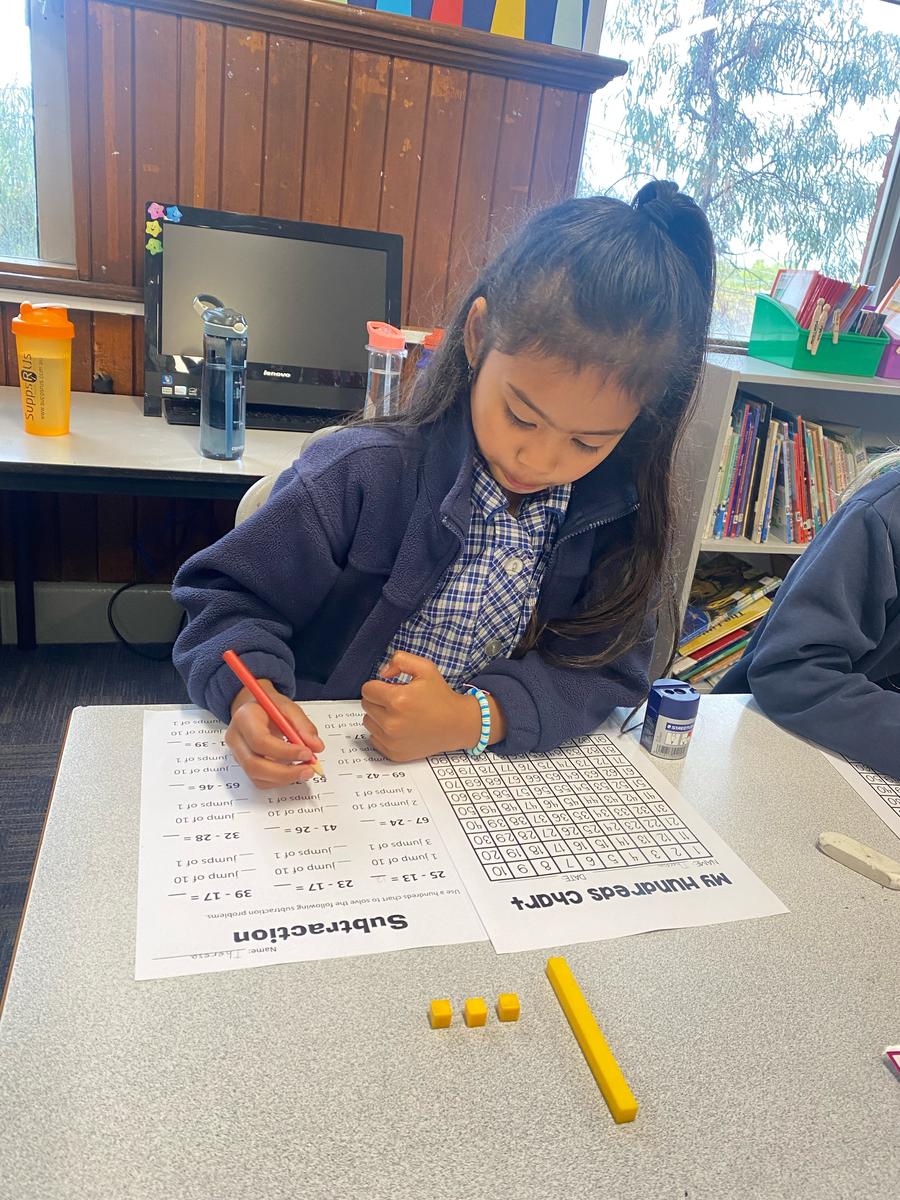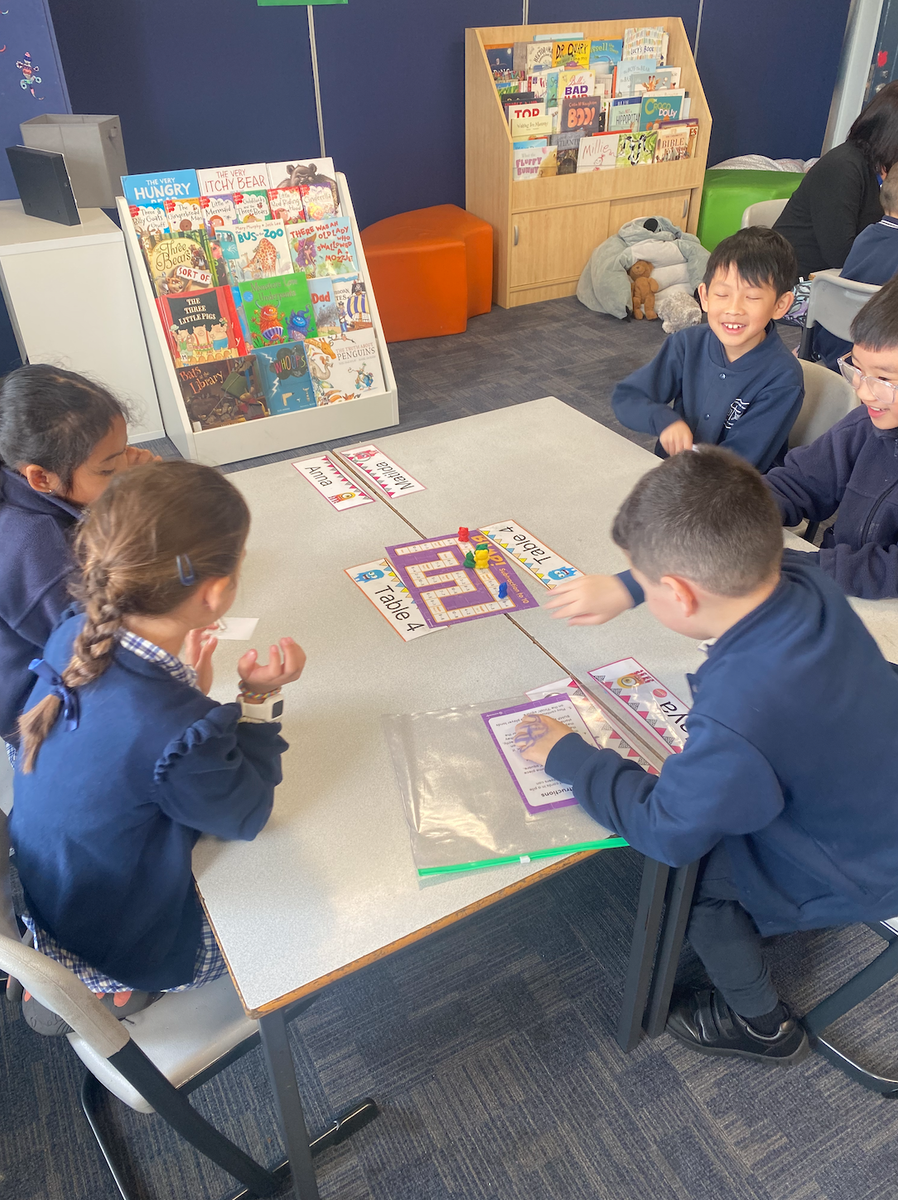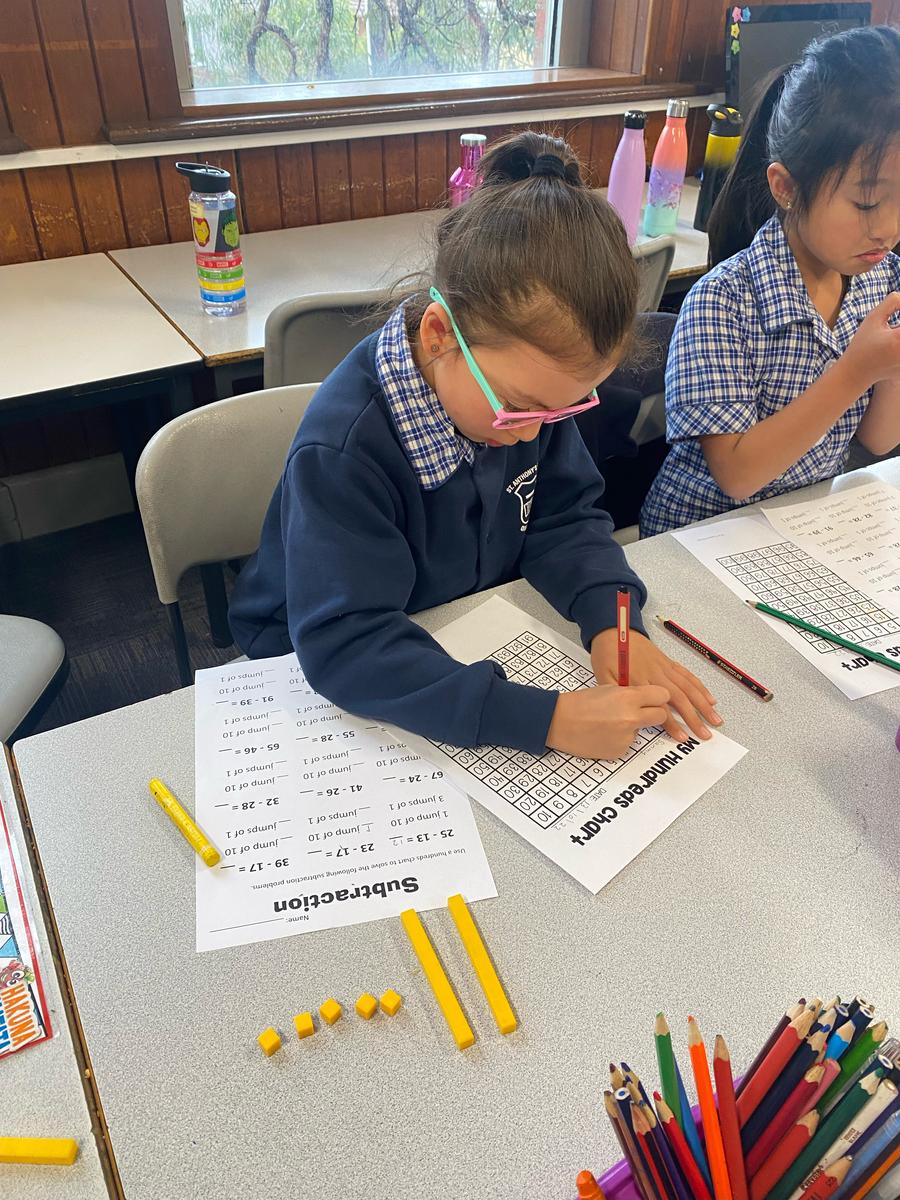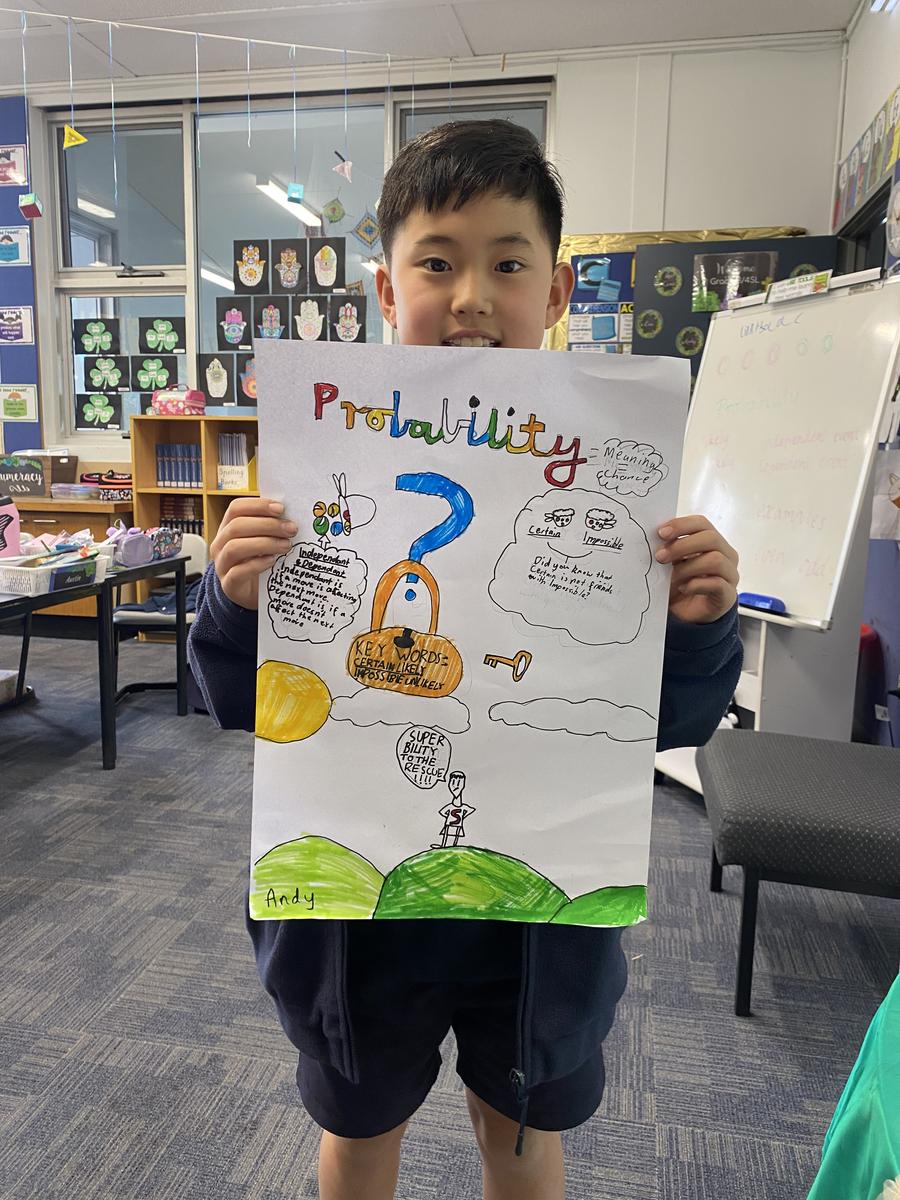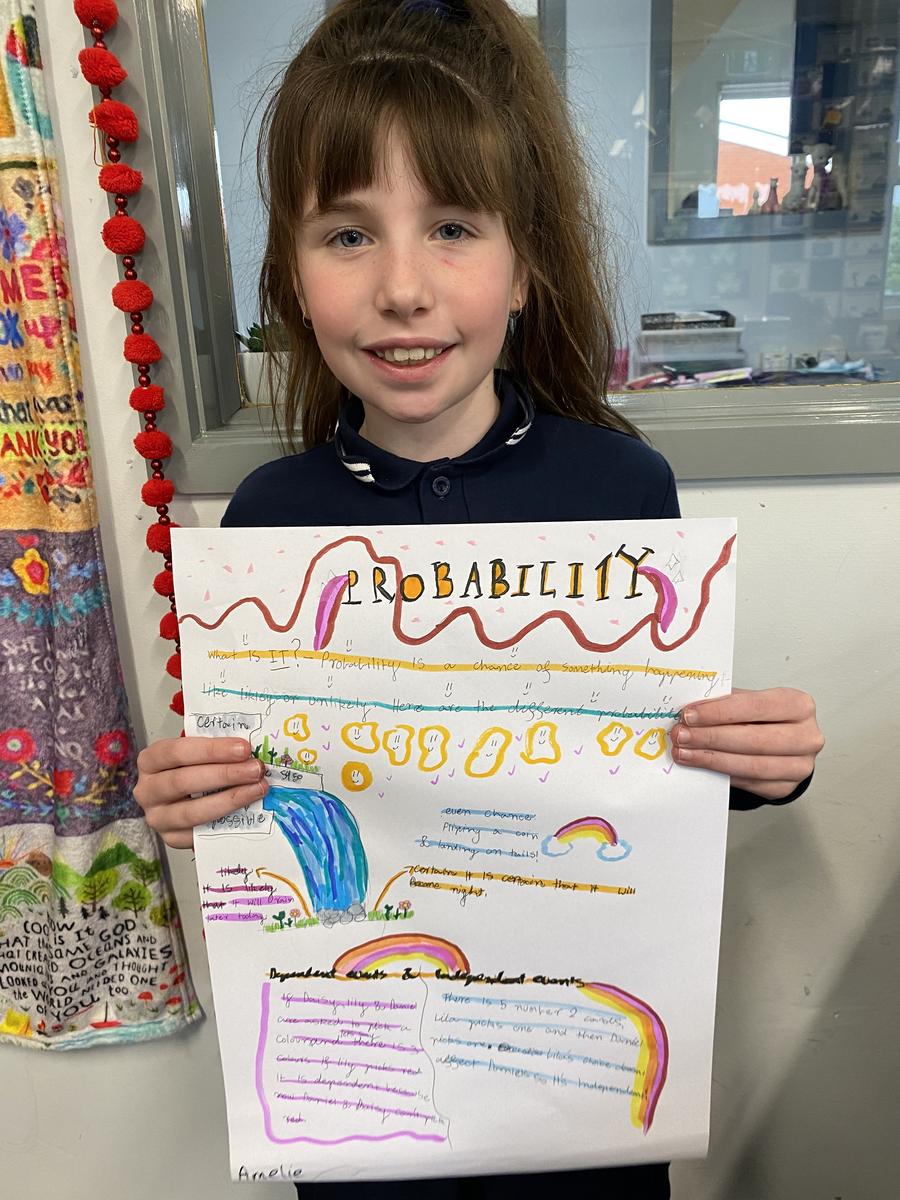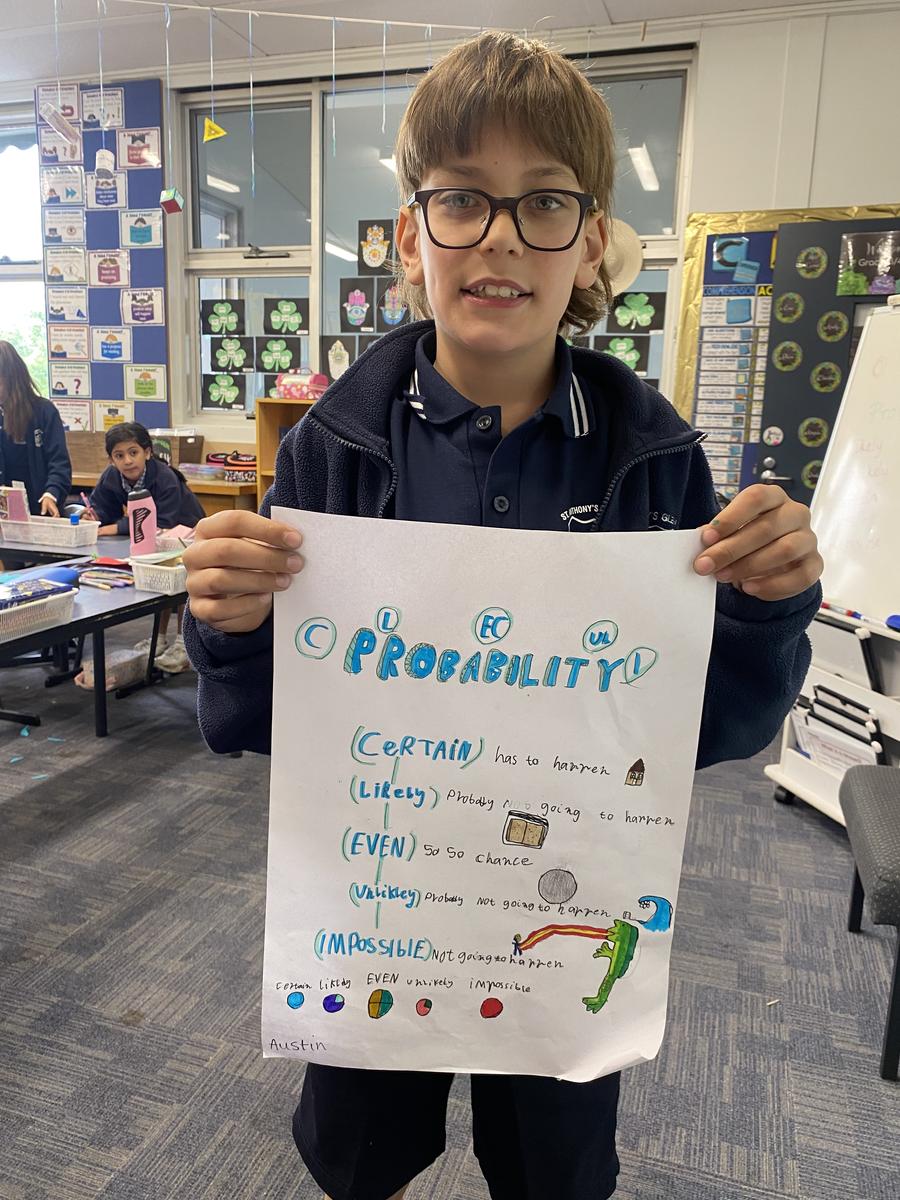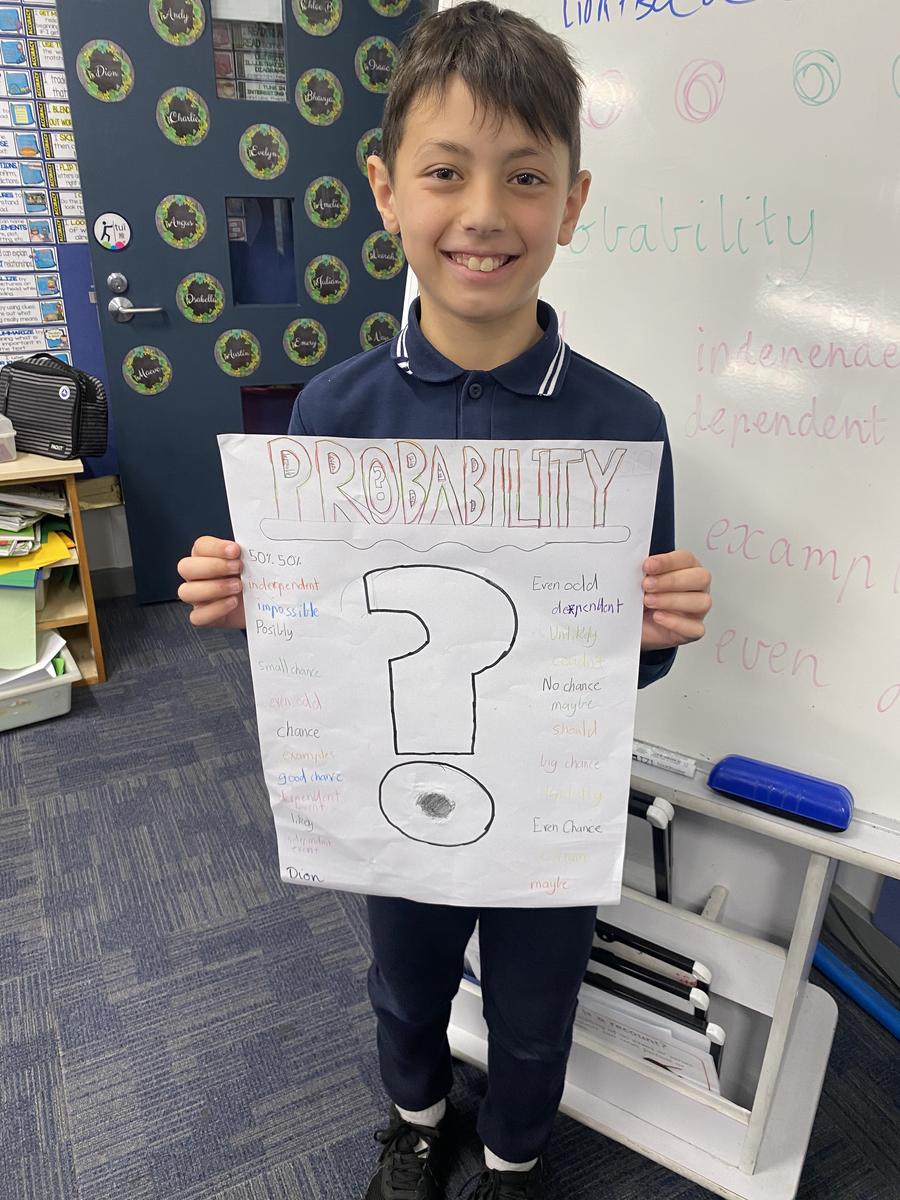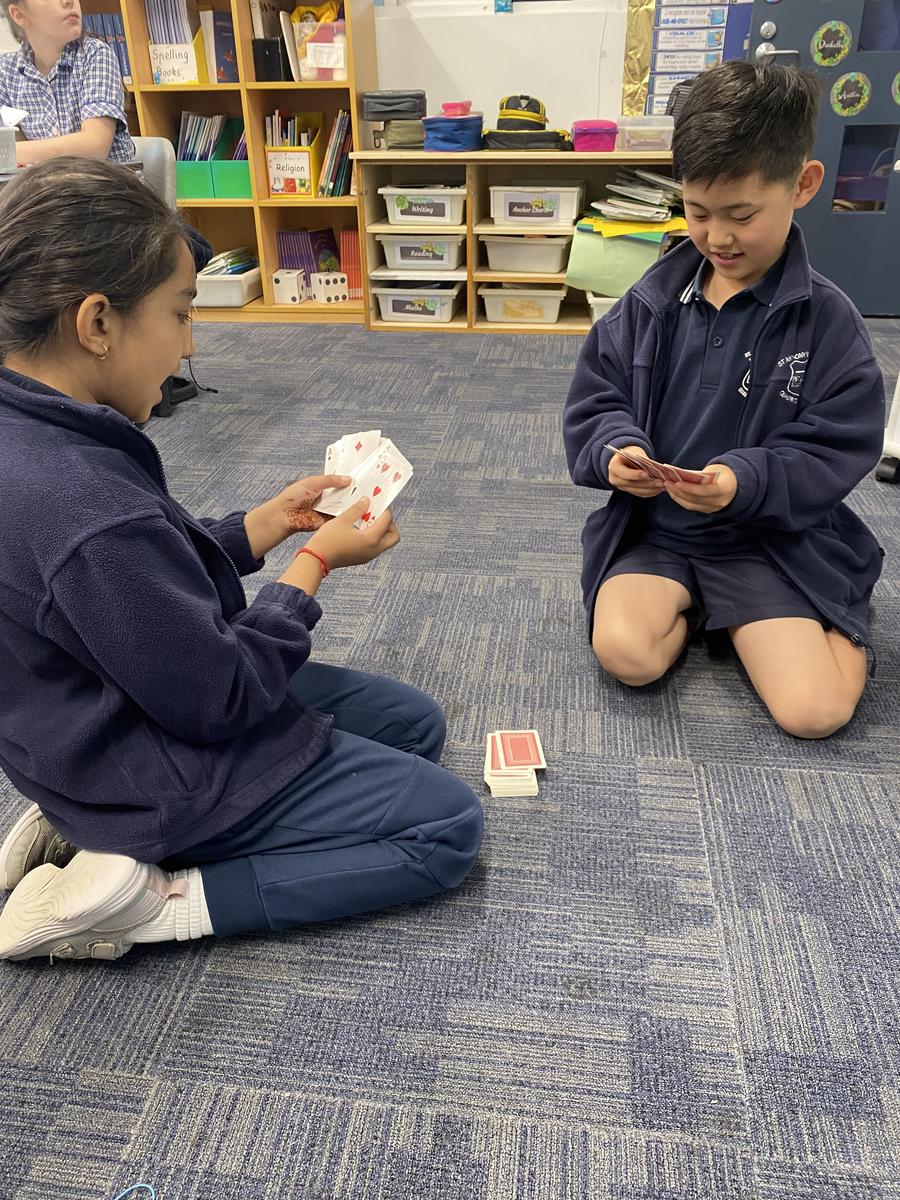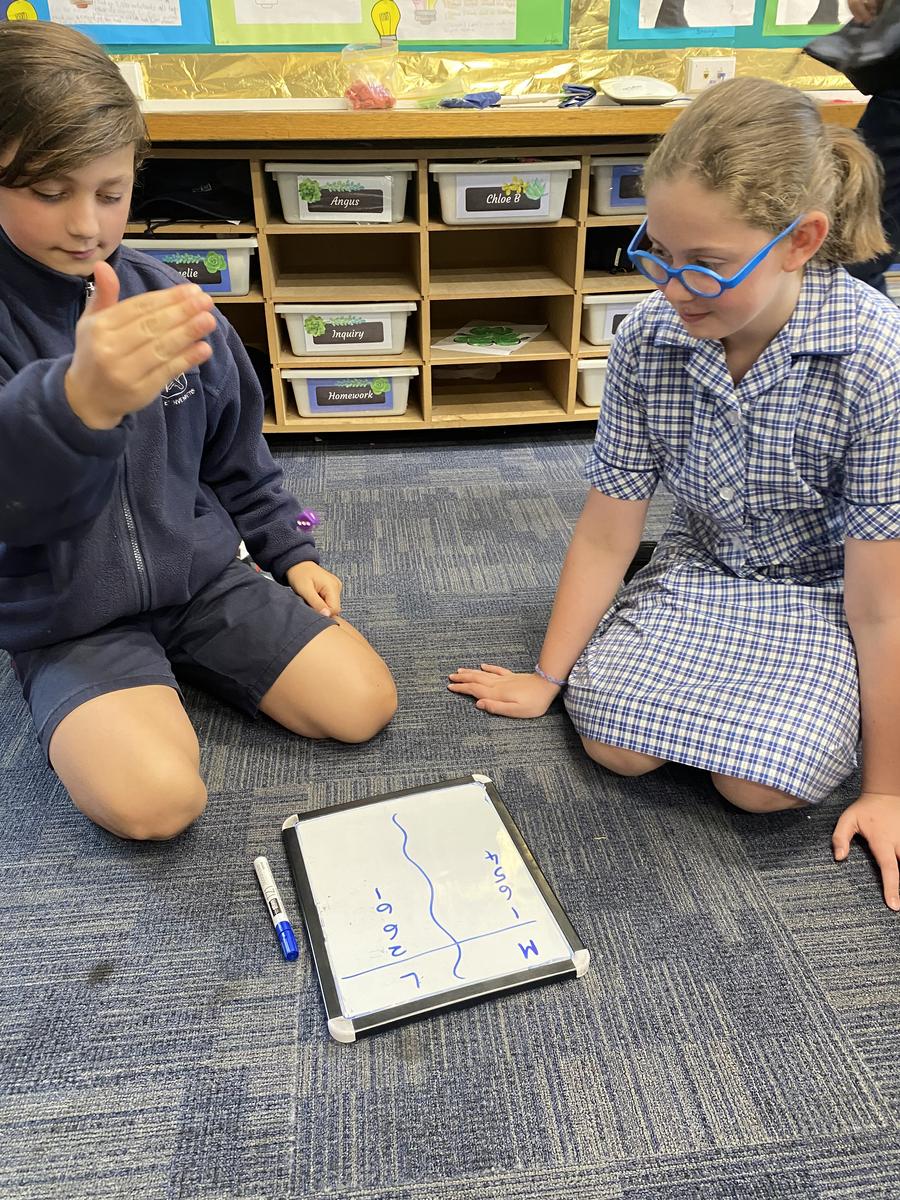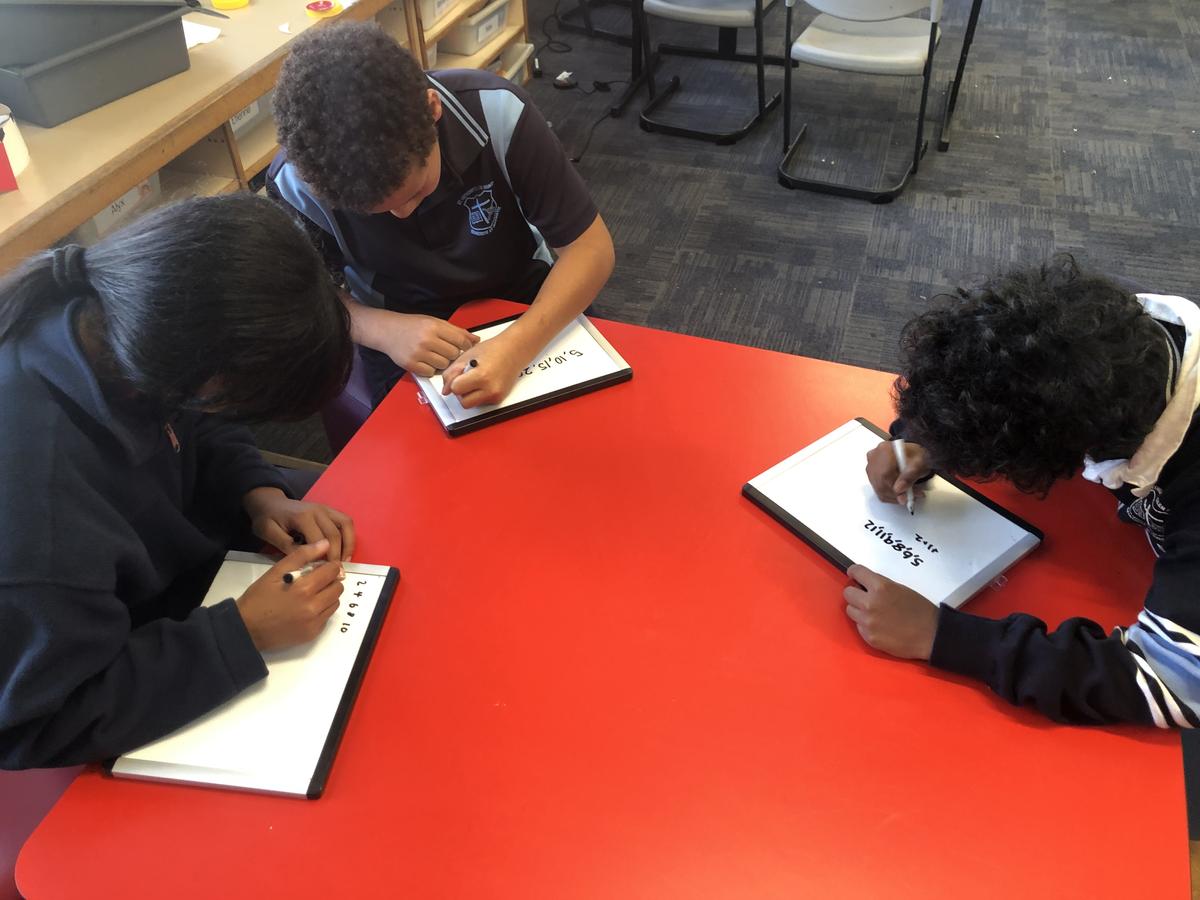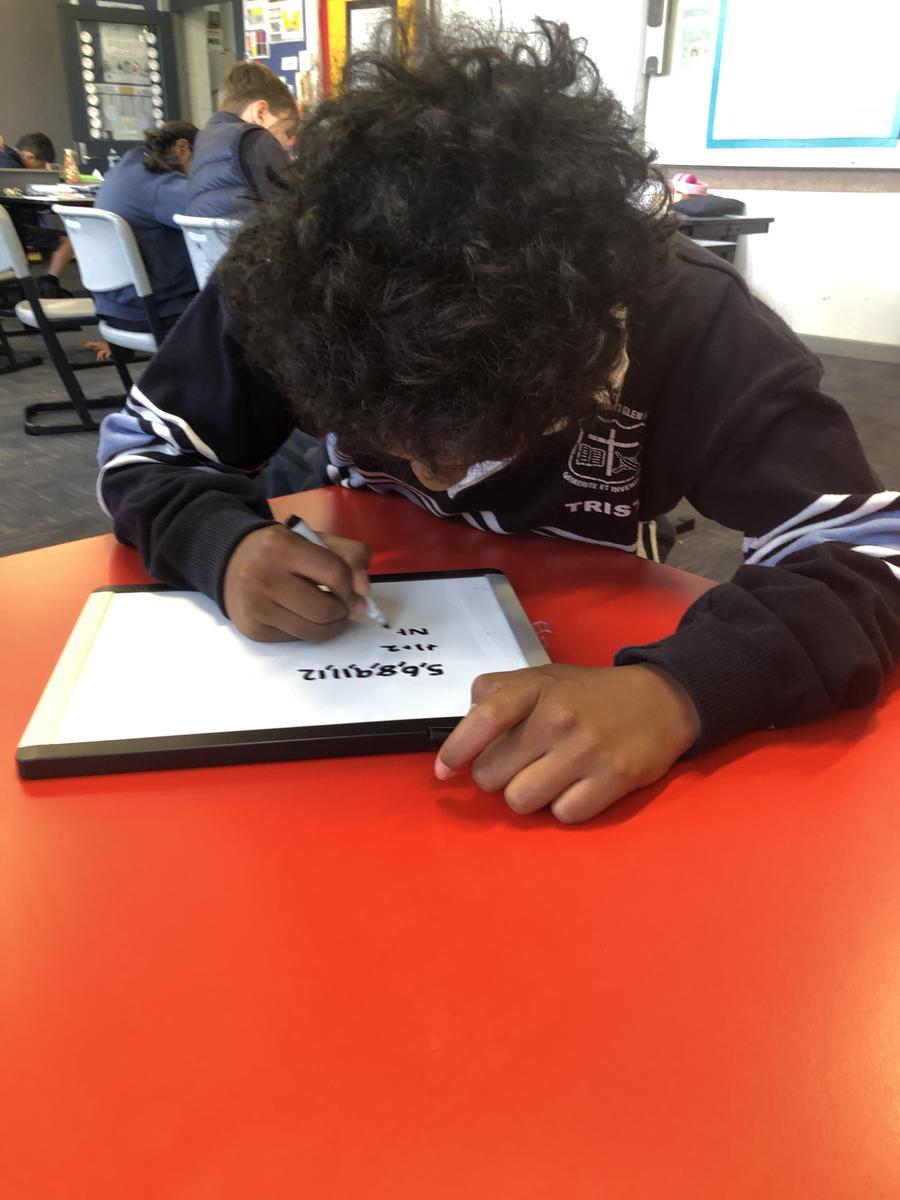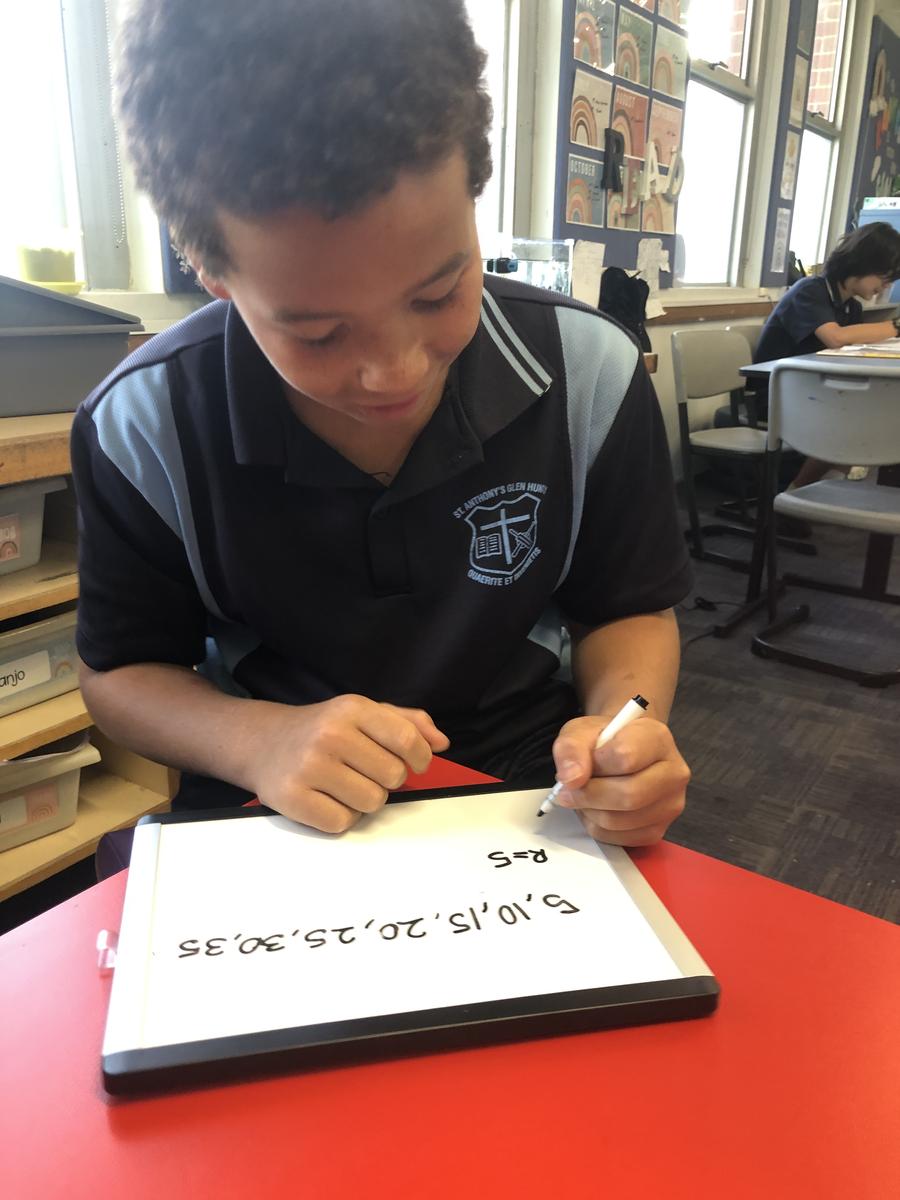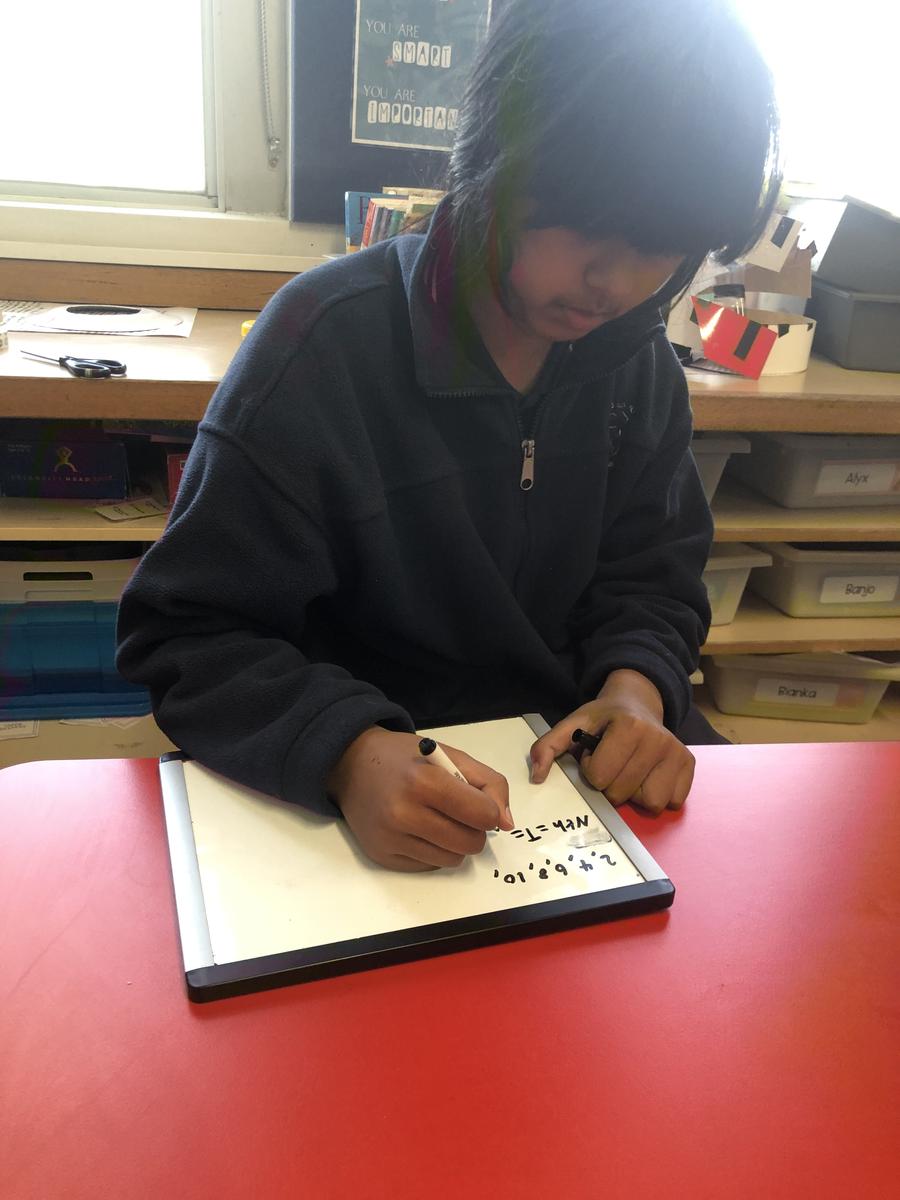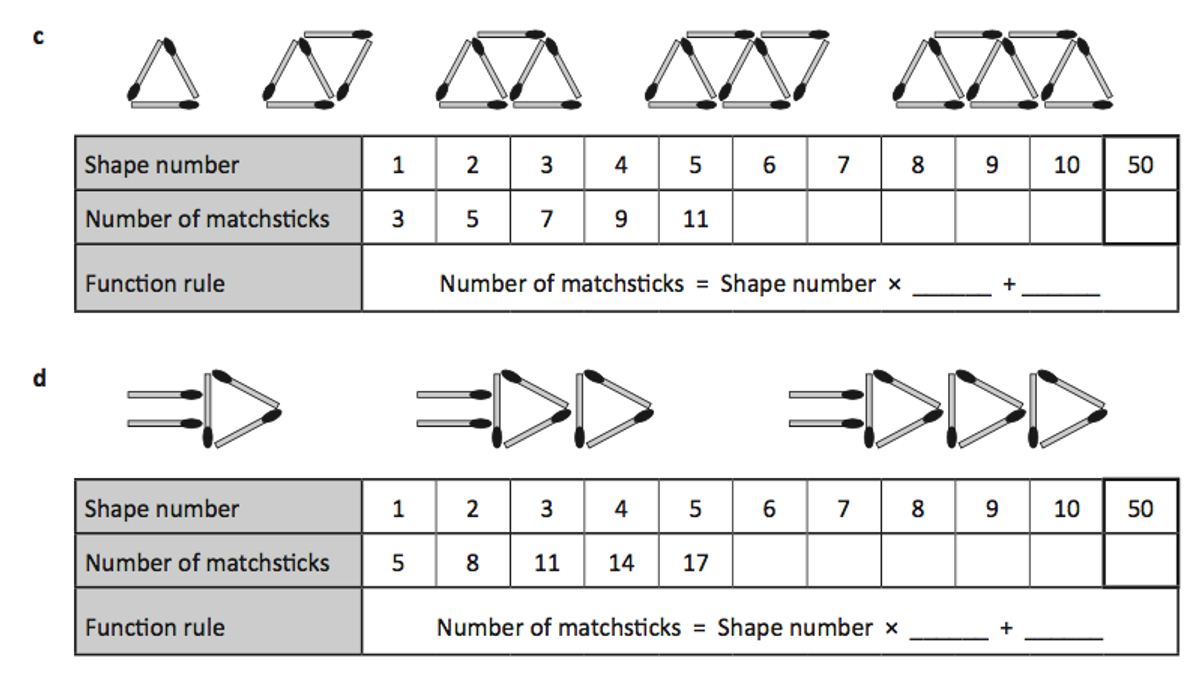Mathematics
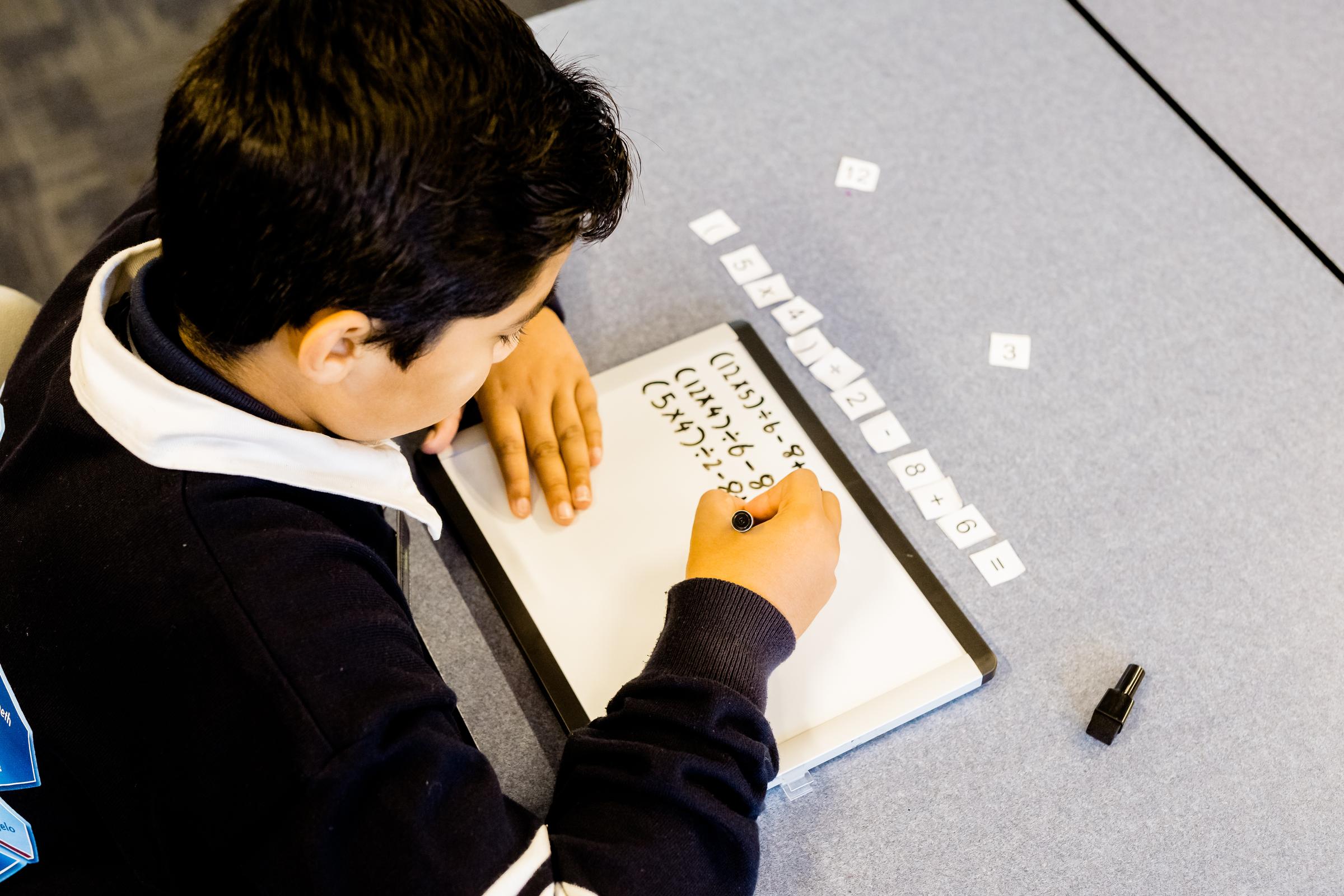
Mathematics in the Classroom
Prep Class
In Prep the students began the term by learning about Division and Multiplication. In our Junior Years, these concepts are taught by sharing objects and creating equal groups using concrete materials.
Year 1/2 Class
In Year 1/2 students have been learning about Subtraction, using hands-on materials and different written and mental strategies to solve problems. The class has been playing games, solving problems and using MAB blocks to show the problems they are solving.
Year 3/4 Classes
The Year 3/4 students have begun the term learning about Probability. Students have investigated whether events are likely, unlikely or certain to occur, they have learnt the difference between dependent and independent events and have played and created their own games of chance.
Year 5/6 Classes
In Year 5/6 the students have been learning about Pattern and Algebra. They have created equivalent equations, solving to find missing values, they have created and completed number patterns involving whole numbers, fractions and decimals and have learnt how to write a formula to find any value in a number pattern.
Maths while you walk!
We are currently participating in the Active Schools Go for Gold competition, so hopefully lots of families are enjoying their walks to and from school. While walking to school there are lots of great games you can play to develop your child’s mathematical fluency, here are a few ideas:
Number hunt - Call out a number and the first person to spot that number - on a letter box, sign, number plate, etc. - yells it out! If you are the first to spot the number you get to choose the next number to hunt for. For the older kids - the first person to see a number can square the number and say it aloud (e.g. 49), the other people walking with you need to find the number the person has squared (e.g. the 7)
Count it out - How many can we count to before the light turns green? Before we reach the train tracks? Before we get to school? Start with smaller distances for younger kids and count out loud with them to see how many you can count to before you reach your goal. For older kids you can count in twos or fives or tens or even in Mandarin. You can also talk about time, how to count seconds and how many seconds are in a minute.
Have fun with it, make up your own games and enjoy the walk to school while improving your child's Maths skills!
Melanie Norton
Mathematics Leader

